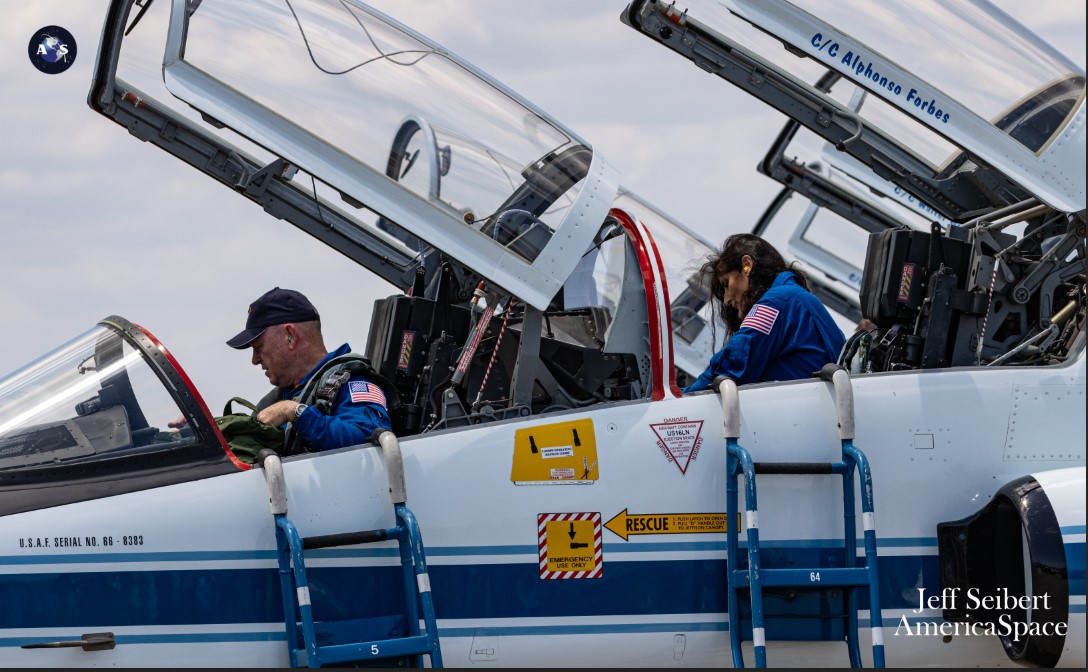
After more than a decade in development, Boeing stands ready to launch the highly anticipated Crew Flight Test (CFT) of its CST-100 Starliner spacecraft at 10:34 p.m. EDT Monday, 6 May. Veteran NASA astronauts Barry “Butch” Wilmore and Suni Williams—both retired Navy captains with a few minutes shy of 500 cumulative days of previous space-time between them— will lift off atop a United Launch Alliance (ULA) Atlas V booster from storied Space Launch Complex (SLC)-41 at Cape Canaveral Space Force Station, Fla., spend at least eight “docked” days aboard the International Space Station (ISS) conducting an extensive array of flight test objectives, then return to a parachute-and-airbag-aided landing on solid ground in the Western United States.
Wilmore and Williams will become the first humans to fly a member of the “Mighty Atlas” rocket family since “Original Seven” Project Mercury astronaut Gordon Cooper’s Faith 7 mission way back in May 1963. And a solid-ground touchdown at one of four potential zones—two locations at White Sands Space Harbor (WSSH) in New Mexico, or alternately Willcox Playa, Ariz., or Dugway Proving Grounds, Utah—will see the two astronauts execute the first “land” landing of a crew-carrying U.S. spacecraft since the final curtain-call of the Space Shuttle Program in July 2011.
Now deep into pre-flight quarantine (properly termed Flight Crew Health Stabilization) and sequestered away in the crew quarters on the third floor of the Neil Armstrong Operations & Checkout (O&C) Building at Florida’s Kennedy Space Center (KSC), the astronauts yesterday spoke about their expectations as they prepare for CFT, with Williams set to become the first woman to fly the maiden voyage of a brand-new orbital-class vehicle. “We’ve got our fingerprints on every single procedure that exists for this spacecraft,” said Wilmore, “and that’s part of what the test process is.”
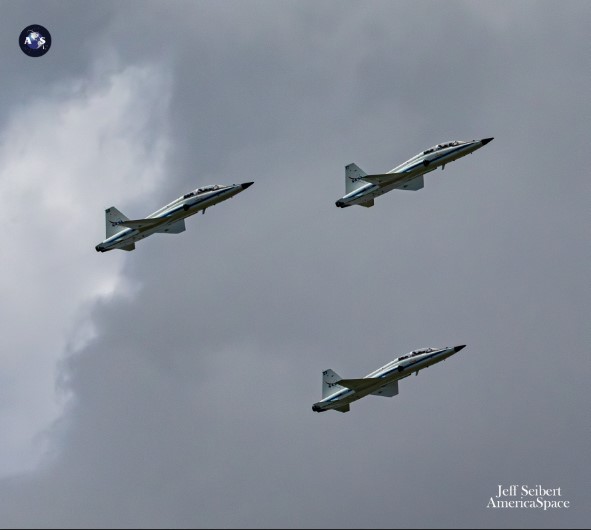
Sixty-one-year-old Wilmore and 58-year-old Williams bring a tremendous amount of experience to bear for this mission. Both have been members of NASA’s Astronaut Corps for around a quarter-century and each flew twice previously to the ISS, during which Wilmore logged 178 days in space and Williams almost 322 days.
Wilmore first flew as pilot on shuttle Atlantis’ STS-129 mission in November 2009, then commanded Expedition 42 during a six-month increment between September 2014 and March 2015. Across those two flights, he supported hundreds of scientific and technological research investigations, welcomed and bade farewell to numerous uncrewed visiting vehicles and accrued over 25 hours of spacewalking experience in four sessions of Extravehicular Activity (EVA).
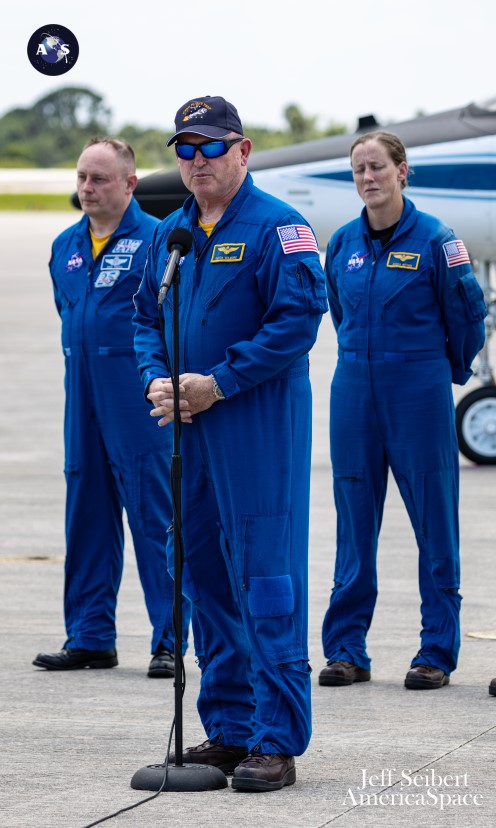
Williams logged a pair of long-duration station stays, first launching aboard shuttle Discovery on STS-116 in December 2006 and remaining aboard the ISS for six months, returning aboard Atlantis on STS-117 the following June after 195 days. In doing so, she eclipsed fellow NASA astronaut Shannon Lucid for the longest single space mission by a woman.
Following a spell as deputy chief of NASA’s Astronaut Corps, she later commanded Expedition 33 during a four-month ISS increment in July-November 2012. And across her career has completed seven EVAs, totaling over 50 hours.
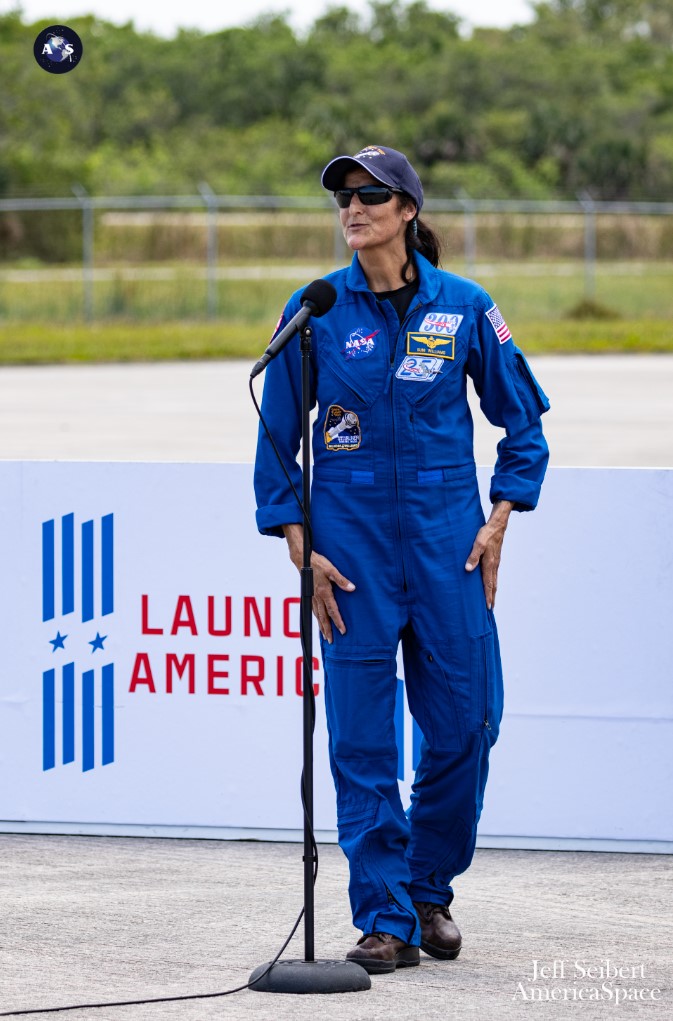
“The stars aligned”, Wilmore said yesterday, in them getting this particular “plum” of a flight assignment and indeed they did, for neither member of the CFT crew was originally intended for this mission at all. When the first formal crew announcements were made (with great fanfare) in August 2018, CFT was baselined as a three-person flight crewed by former shuttle commander and Boeing executive Chris Ferguson and NASA astronauts Nicole Mann and seasoned shuttle pilot Eric Boe.
But Boe withdrew from the crew in January 2019 due to an undisclosed medical issue and was replaced by veteran ISS commander Mike Fincke. Then in fall 2020 Ferguson stood down from commanding CFT for personal reasons and his place went to Wilmore, who had shadowed the crew in a backup capacity since July 2018.
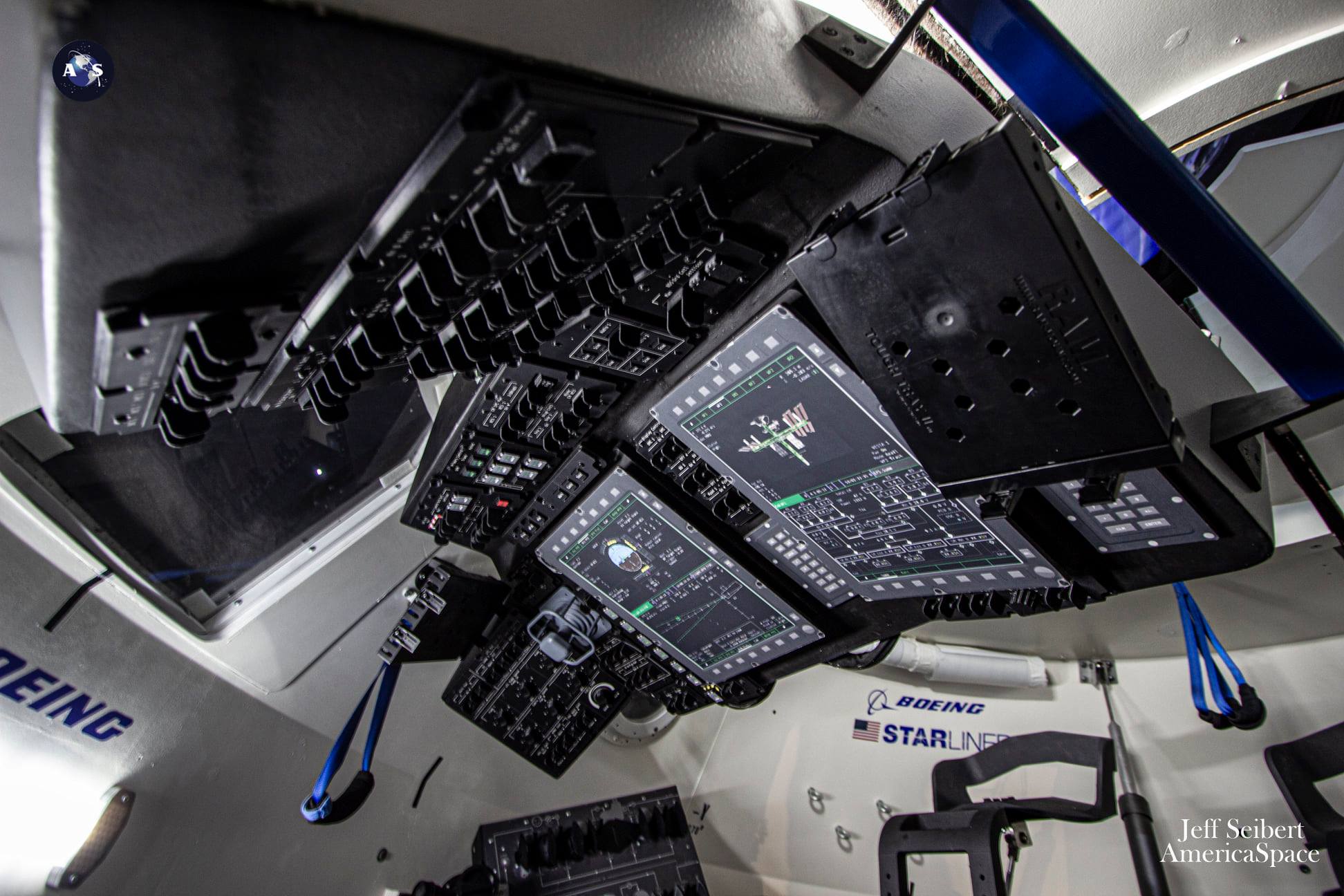
Still more changes were afoot. In October 2021, as Starliner program delays pushed CFT inexorably to the right on the manifest, NASA rotated Mann into the command of Crew-5, shifting her focus from Starliner over to SpaceX’s Crew Dragon. Mann’s departure meant that none of the original CFT line-up would end up flying the mission.
Meanwhile, Wilmore and Fincke continued training for CFT until June of 2022. At that point, NASA announced that Wilmore would retain his place in command but would be joined in the pilot’s seat by Williams.
Per the August 2018 announcement, Williams had previously been slated to command the first “operational” crew rotation flight, Starliner-1. That mission is now expected to fly next year with Fincke and fellow NASA astronaut Scott Tingle, plus two other crew members, including Canada’s Josh Kutryk.
In readiness for CFT, the initial build-up of the Atlas V launch vehicle—the 106.5-foot-tall (32.6-meter) Common Core Booster (CCB), a pair of Aerojet Rocketdyne-built AJ-60 solid-fueled boosters, the 41.5-foot-long (12.6-meter) Dual-Engine Centaur (DEC) upper stage and the Launch Vehicle Adapter (LVA), a structural interface for the attachment of Starliner itself—was completed in late February inside the Vertical Integration Facility (VIF) at SLC-41. Elsewhere, the Starliner completed fueling and on 16 April was transported from KSC’s Crew and Cargo Processing Facility (C3PF) to the VIF and positioned atop the rocket via the Handling Fixture Hoist Tool four-point “sling” to top-out the impressive stack at 172 feet (52 meters) tall.
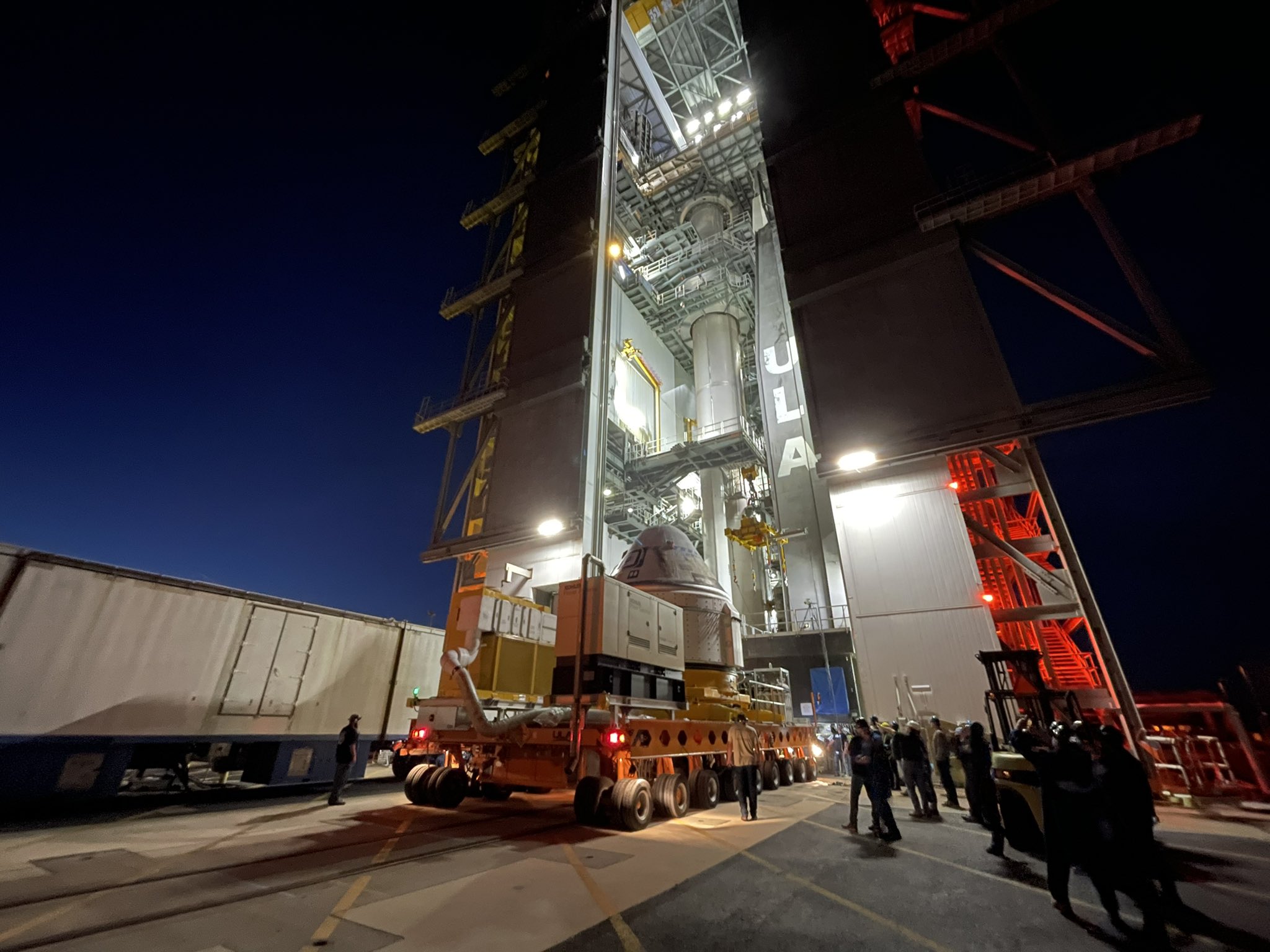
Last week, Wilmore and Williams commenced Flight Crew Health Stabilization and flew from Ellington Field, near Houston, Texas, to KSC, aboard T-38 jets, accompanied by Fincke and fellow NASA astronaut Jessica Wittner. Late on 25 April, NASA and Boeing teams completed the pre-launch Flight Test Readiness Review and the next day Wilmore and Williams participated in a day-of-launch dress rehearsal, donning their “Boeing Blue” launch and entry suits, working in a Starliner flight deck simulator and operating identical software as they will be presented with for the real thing on Monday night.
Both astronauts have enjoyed their time in quarantine, with Wilmore quipping that they have been “well-fed” by KSC personnel. For their final meal before launch, Wilmore has selected meat loaf with some broccoli and Williams acquiesced that springtime “is not the best time” for her top choice of lobster and will instead opt for salmon.
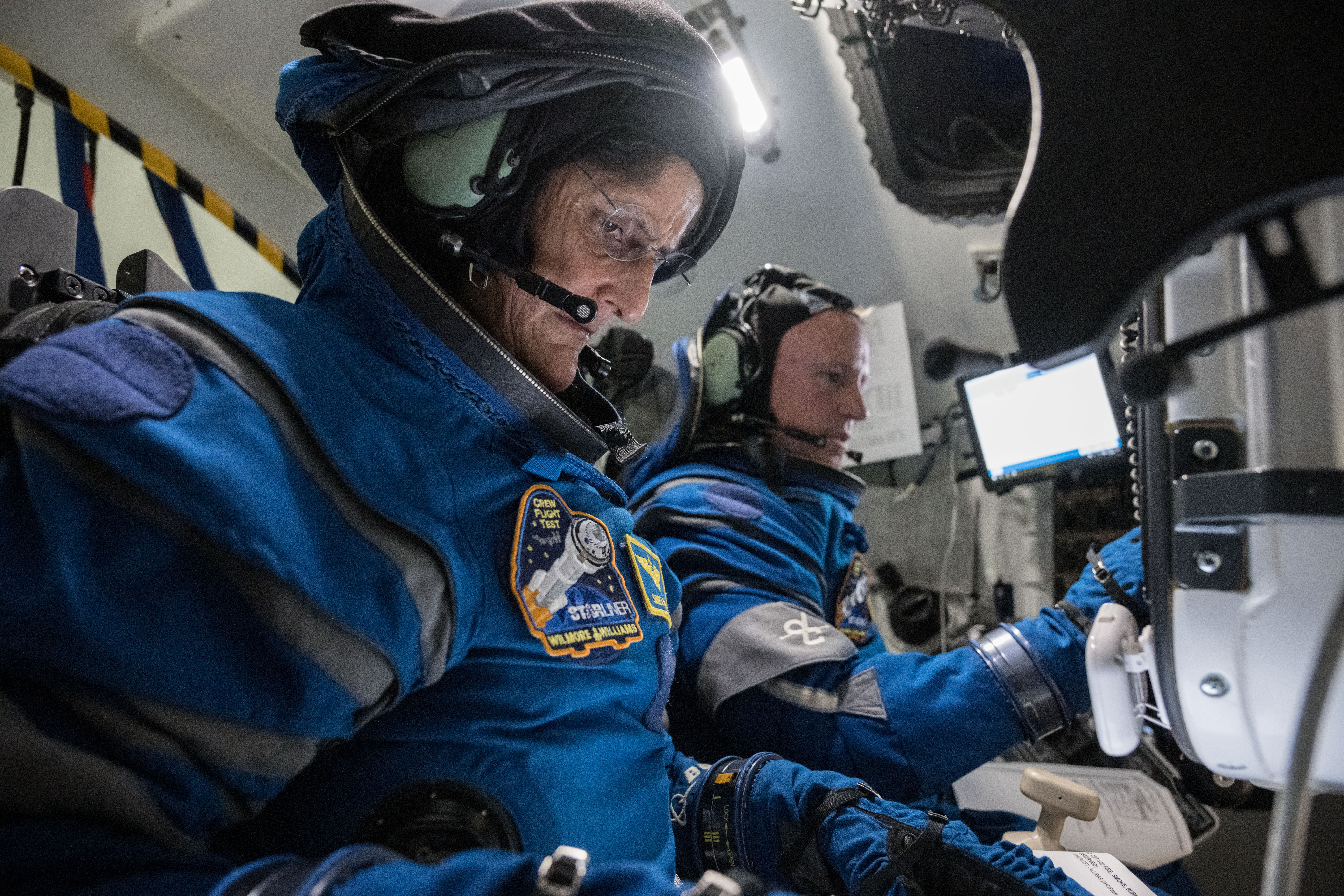
Current plans call for the Atlas V to roll the quarter-mile (400-meter) distance from the VIF to the SLC-41 pad surface on Sunday for checkouts. According to Wilmore, the astronauts and flight control teams are already beginning to sleep-shift their schedules, with the crew set to awaken early Monday afternoon to prepare for the 10:34 p.m. EDT liftoff and ensure that they are well-rested and ready for a busy first few hours in orbit.
Wilmore and Williams will be turned over to the Boeing team about 4.5 hours before launch to receive a weather briefing and don their launch and entry suits. They will ride the all-new “Astrovan”—which boasts cushioned seating and television, allowing Wilmore to watch a couple of action scenes from Top Gun: Maverick—out to the pad about two hours prior to T-0, where closeout personnel will assist them inside Starliner’s crew cabin, close the hatch at T-80 minutes and depart the area at T-50 minutes.
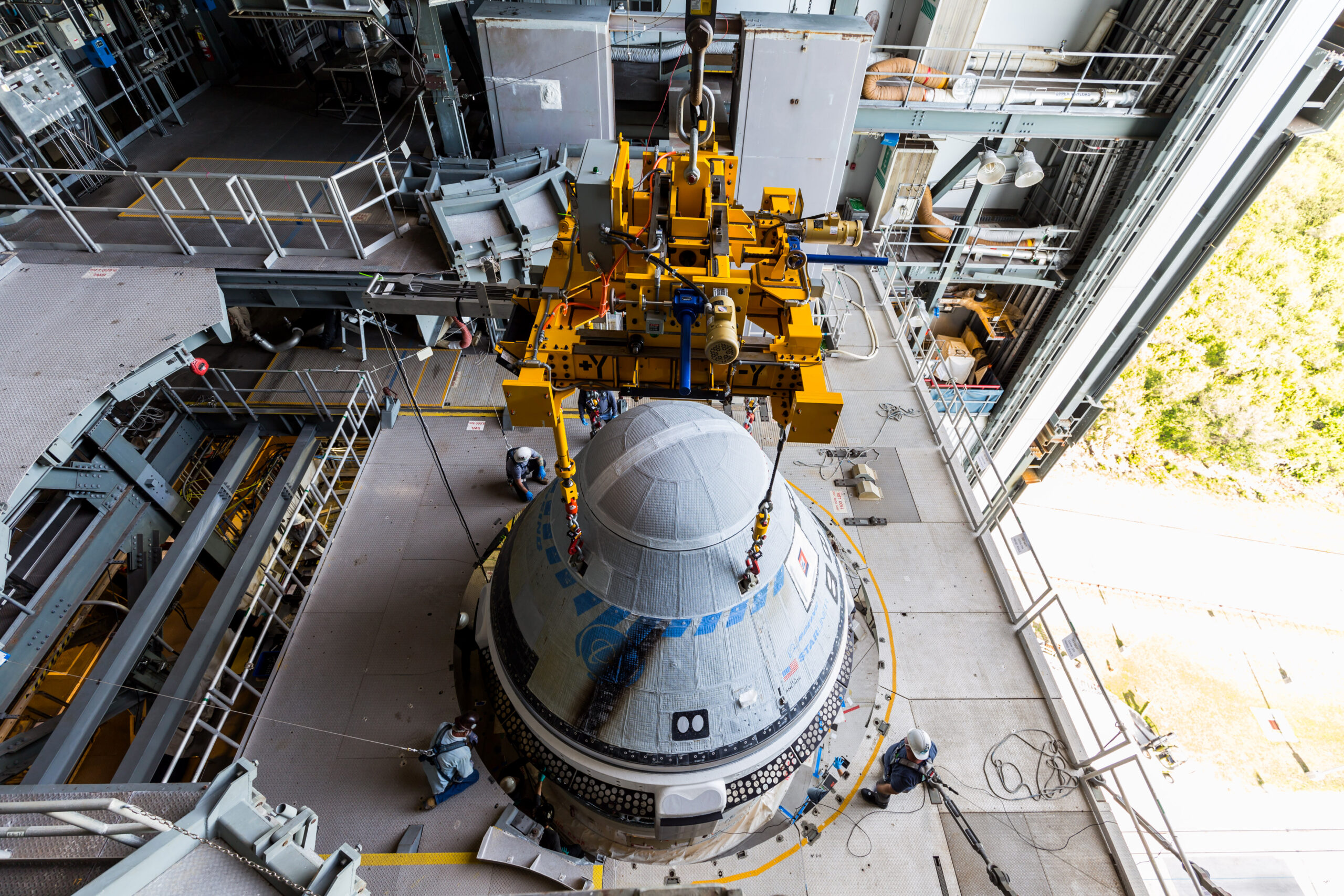
Heading deeper into the countdown, Starliner will transition from external to internal power at T-18 minutes and the launch pad’s Crew Access Arm (CAA) will retract at T-11 minutes. Passing into the Terminal Count at T-4 minutes, one of the crew’s critical tasks at T-75 seconds—“LAS Arm to Auto”—will see them perform a switch-throw to bring the Launch Abort System online.
Monday’s launch marks the hundredth outing of an Atlas V since the rocket’s maiden voyage in August 2002. Flying in a variety of configurations, the fleet has delivered commercial geostationary communications satellites, classified payloads for the National Reconnaissance Office and U.S. Space Force, a flotilla of military weather, surveillance and early-warning assets, five X-37B Orbital Test Vehicles (OTVs) and a smorgasbord of exploratory missions to learn more about the Sun, the Moon, visit distant Pluto for the first time, orbit, land and rove on the ochre-hued plains of Mars, circle giant Jupiter and investigate its Trojan minor bodies and visit and gather microscopic surface specimens from the carbonaceous asteroid Bennu.
Seconds after Monday night’s liftoff, Wilmore will be heard making the “Roll Program” call, straight off the pad, as the Mighty Atlas rolls onto the proper heading for insertion into low-Earth orbit. The behemoth will pass through the period of peak aerodynamic turbulence, colloquially known as “Max Q”, and exceed the speed of sound, a little past a minute into ascent, and the two AJ-60 boosters will be jettisoned at T+140 seconds.
Riding onward under the thrust of the Atlas V’s single RD-180 engine, Wilmore and Williams will continue uphill until Booster Engine Cutoff (BECO) at 4.5 minutes after launch. Multiple abort options, ranging from St. John’s, Newfoundland, to Shannon, Ireland, are available to the crew, as well as a notable Abort to Orbit (ATO) profile that enables Starliner—if needed in a serious contingency situation—to burn its engines and limp into a low 120-mile-high (200-kilometer) orbit.
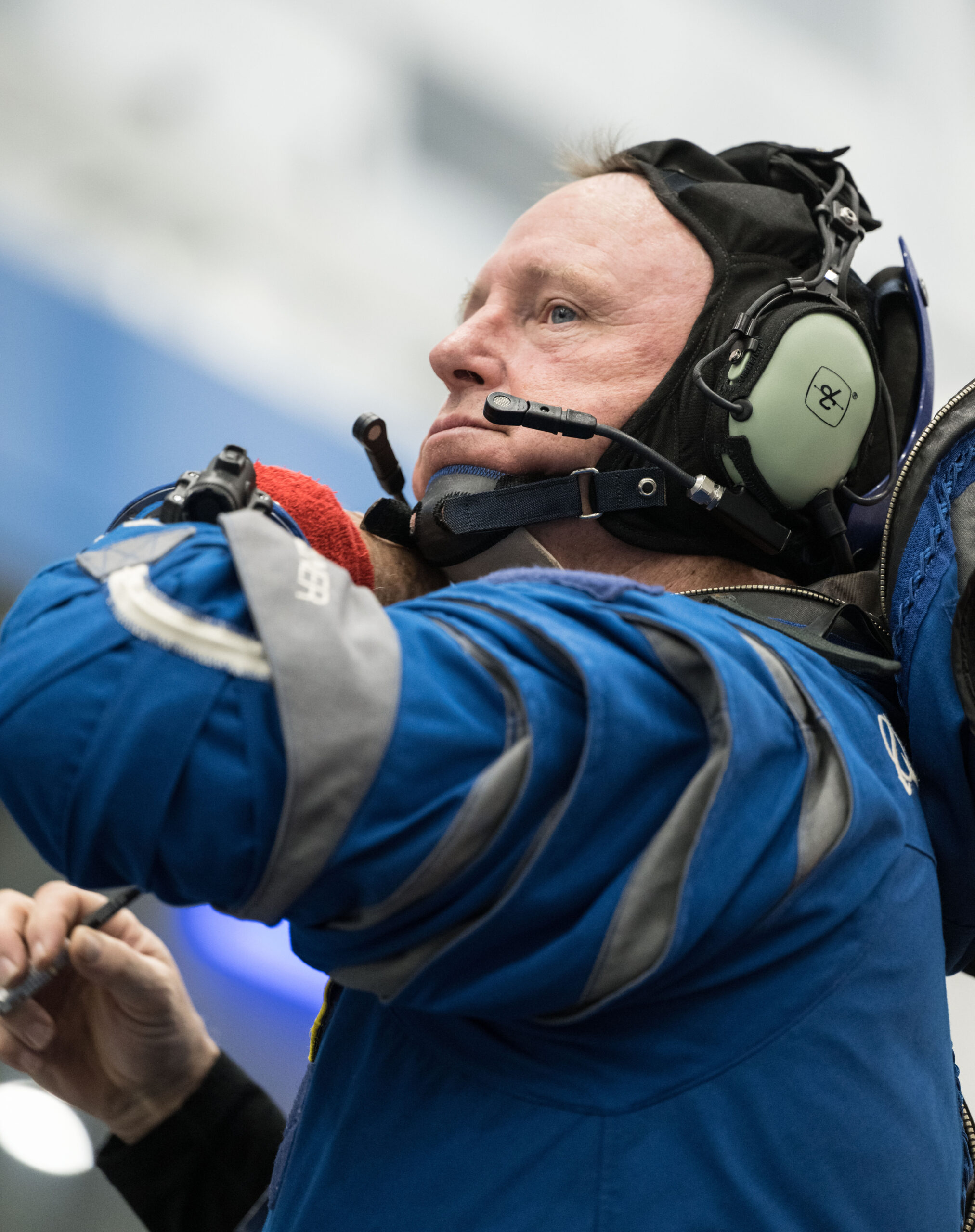
After BECO, the Centaur will ignite its dual RL-10A engines for a lengthy “burn” of seven minutes and 15 seconds to deliver Starliner into orbit. Fourteen minutes and 55 seconds into the mission, the spacecraft—which Williams named “Calypso”, in honor of the former British naval minesweeper made famous as a research vessel by French oceanographer Jacques Cousteau—will separate from the Centaur and enter a preliminary orbit inclined 51.62 degrees to the equator.
The astronauts will follow a 26-hour, 16-orbit rendezvous to reach the ISS, with docking anticipated at the forward port of the Harmony node at 12:48 a.m. EDT Wednesday. During their transit, Wilmore and Williams will be tasked with multiple test objectives, including manually repositioning their spacecraft, manually reacquiring Tracking and Data Relay Satellite System (TDRSS) assets, manually operating Starliner’s thrusters and manually commanding their vehicle in the close vicinity of the station itself.
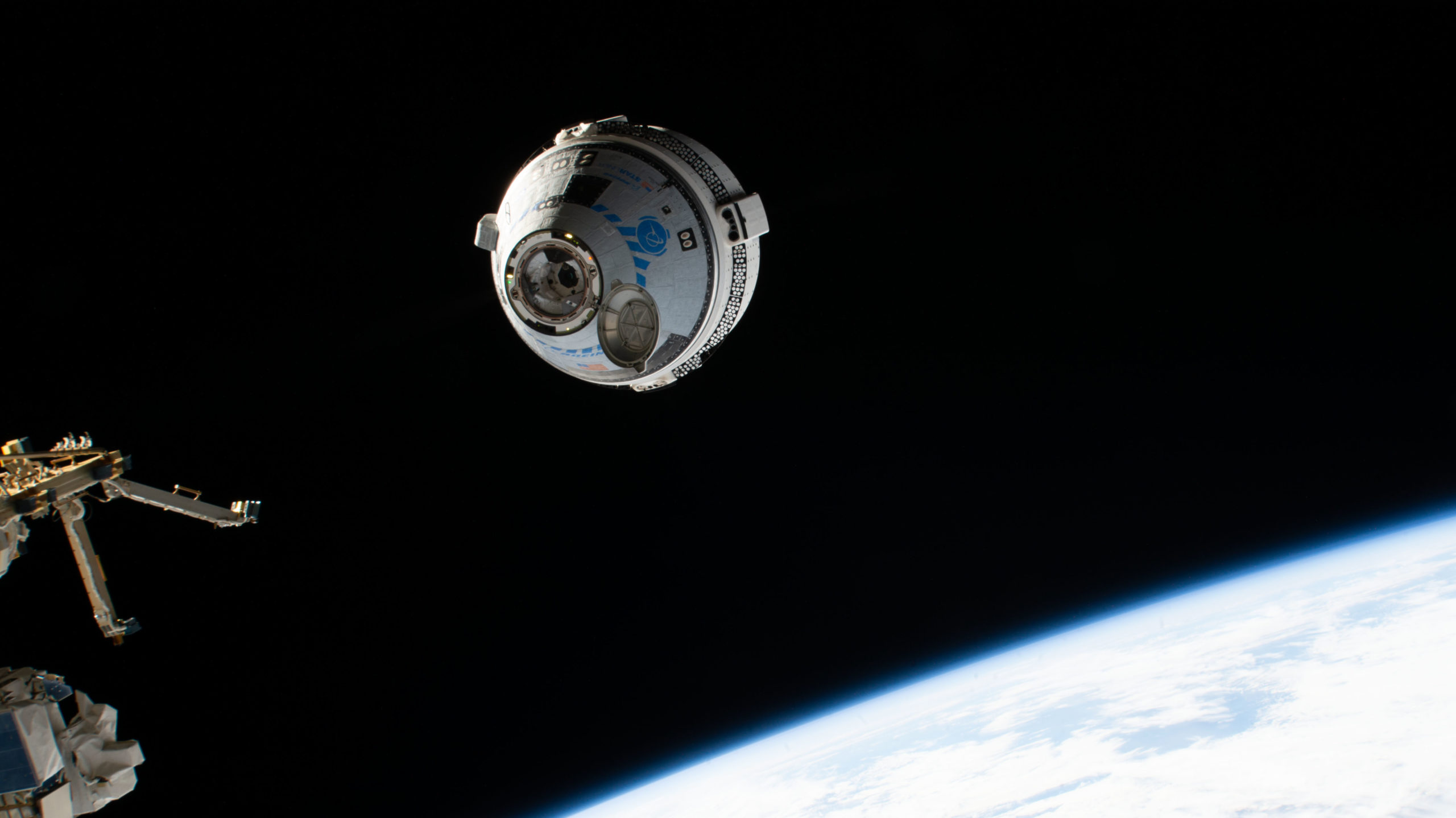
After docking and following pressurization and leak checks, hatches will open and the newcomers will be welcomed by Expedition 71 Commander Oleg Kononenko, his Russian crewmates Nikolai Chub and Aleksandr Grebenkin and NASA astronauts Matt Dominick, Mike Barratt, Jeanette Epps and Tracy Dyson. An initial safety briefing and doffing of their Boeing Blue suits will kick off an ambitious schedule of flight test activities expected to be completed in no fewer than eight docked days.
Several notable activities will occur during that tightly timelined period. Wilmore and Williams will perform a “Safe Haven” period of isolation inside Starliner to demonstrate procedures for an emergency departure, including the powering-up and rapid checkout of spacecraft systems if an imminent undocking becomes necessary.
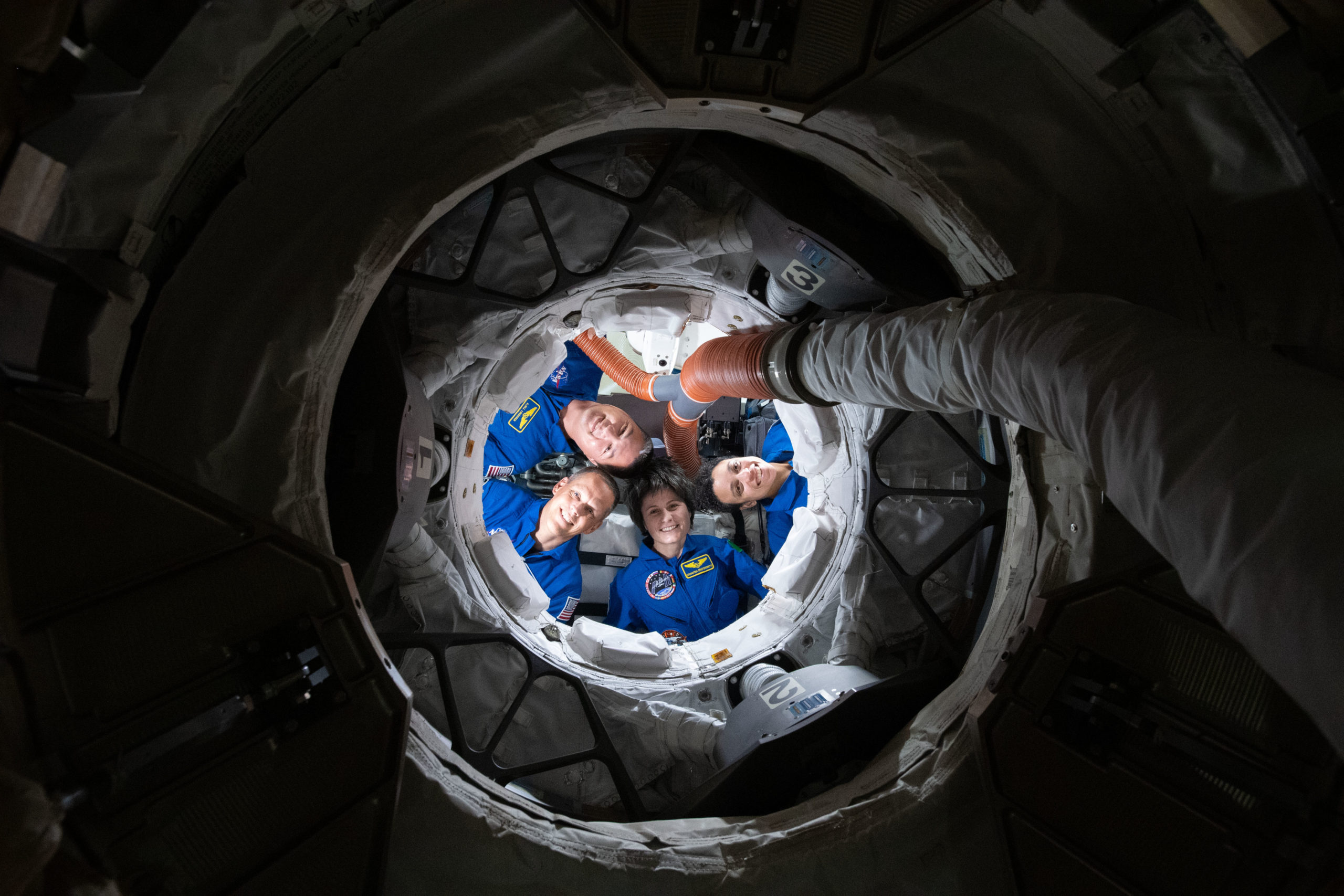
They will also complete pilot-proficiency training in support of future Starliner crews, which are expected to expand to four members on operational, long-duration missions. Since there are only two crew members aboard CFT, they expect to pull over two members of the Expedition 71 team to assist with their evaluations of four-crew operations. “If they’re nice,” Williams joked, “we’ll let them in”, adding that all four U.S. members of Expedition 71 are chomping at the bit to get an insider’s view of the Starliner interior.
Undocking is set to occur about 6.5 hours prior to landing, a little sooner than it would happen on operational missions in order that Wilmore and Williams can perform additional flight tests. CFT will perform a minute-long deorbit “burn” over the Pacific Ocean, with four landing zones—two areas at White Sands, plus two others at Willcox Playa, Ariz., and Dugway Proving Grounds, Utah—available to the crew.
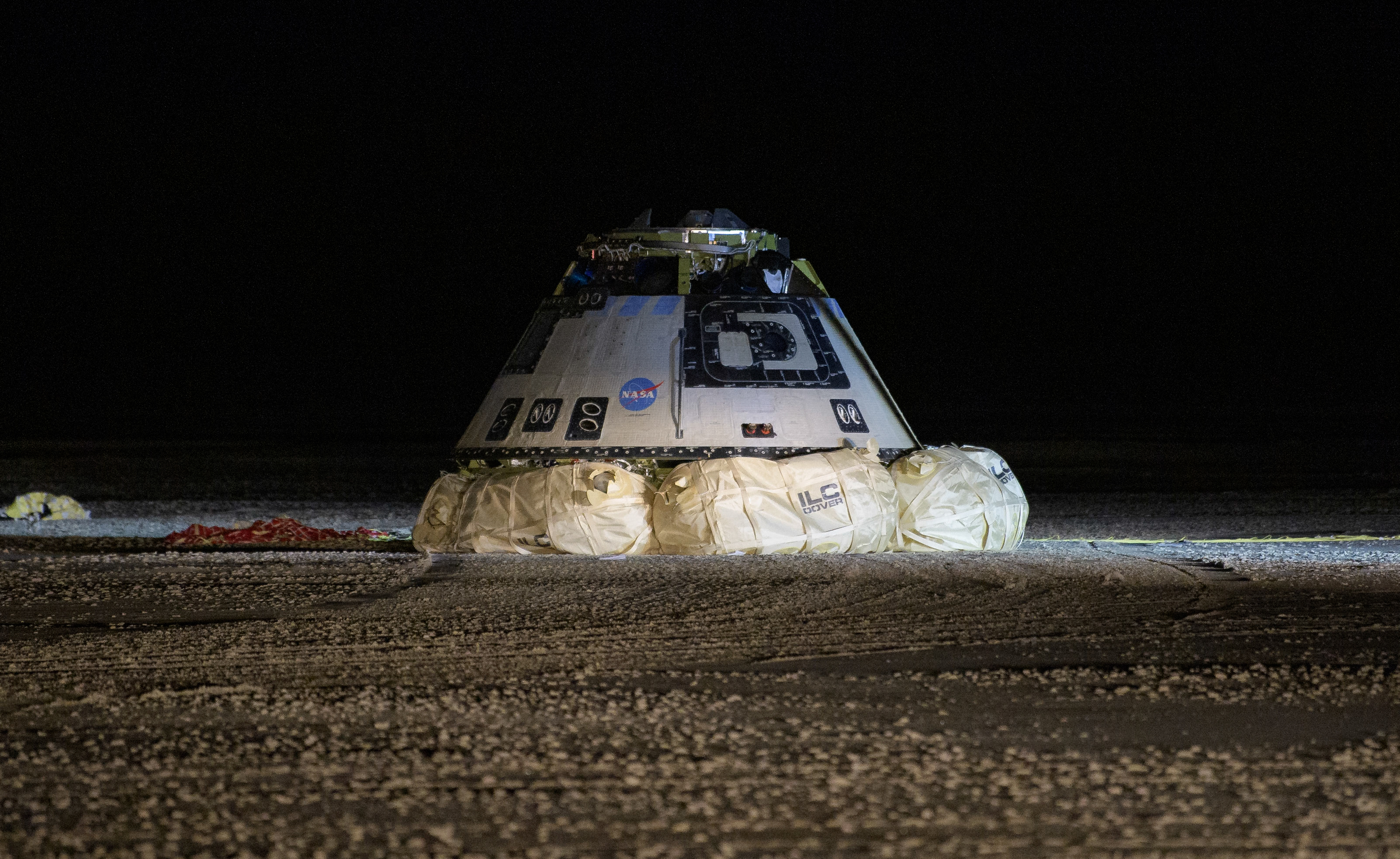
Starliner’s landing sequence will commence at an altitude of 30,000 feet (9,000 meters), with firstly a set of drogue parachutes and later the main canopies “reefed” at 8,000 feet (2,400 meters). Touching down under parachutes and airbags, Wilmore and Williams will be extracted from the spacecraft, helicoptered to a landing field and then flown back to NASA’s Johnson Space Center (JSC) in Houston, Texas.
As CFT is a test flight, neither Wilmore or Williams are under any illusions that the flight will go perfectly and they expect to learn a great deal during the mission. Indeed, as tomorrow’s AmericaSpace story will show, the path that Starliner has taken thus far from concept to reality to the launch pad has been a long and torturous one indeed.




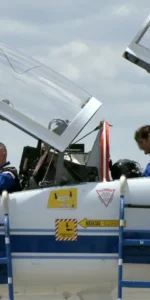
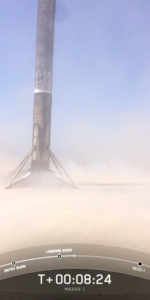
4 Comments
Leave a Reply4 Pings & Trackbacks
Pingback:As CFT Starliner Stands Down Until NET 17 May, SpaceX Prepares for Wednesday Launch Double-Header - AmericaSpace
Pingback:As CFT Starliner Stands Down Until NET 17 May, SpaceX Prepares for Wednesday Launch Double-Header - SPACERFIT
Pingback:As CFT Starliner Moves to NET 21 May, SpaceX Launches 50th Falcon 9 of Year - AmericaSpace
Pingback:As CFT Starliner Moves to NET 21 May, SpaceX Launches 50th Falcon 9 of Year - SPACERFIT